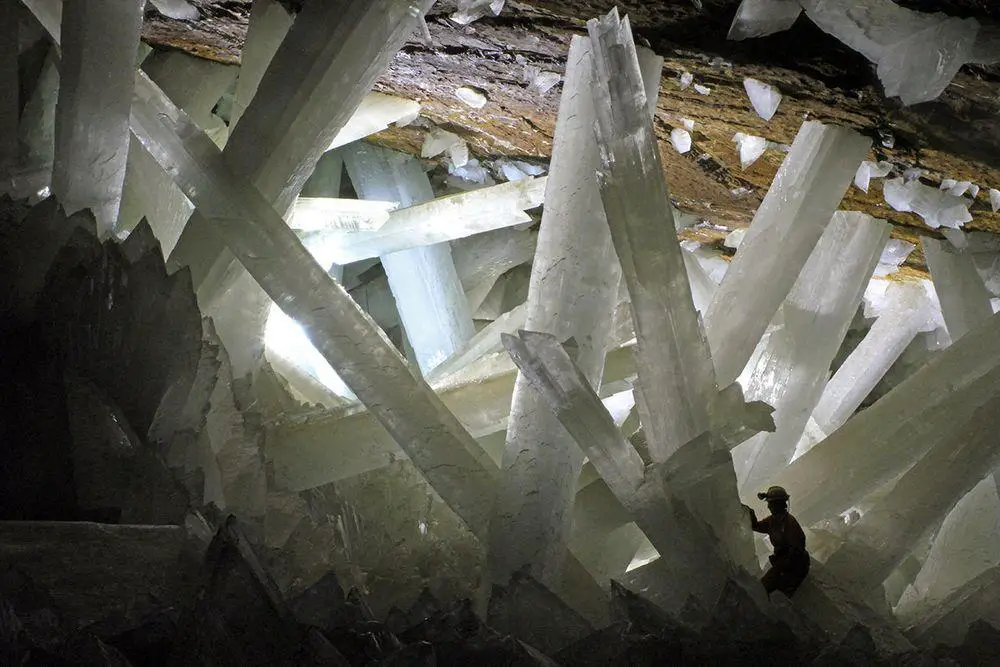World 🢖 Australia and Oceania 🢖 Polynesia 🢖 American Samoa
Animal colonies 🢔 Ecosystems 🢔 Biological wonders 🢔 Categories of wonders
Wonder
Vailulu’u Eel City and Moat of Death
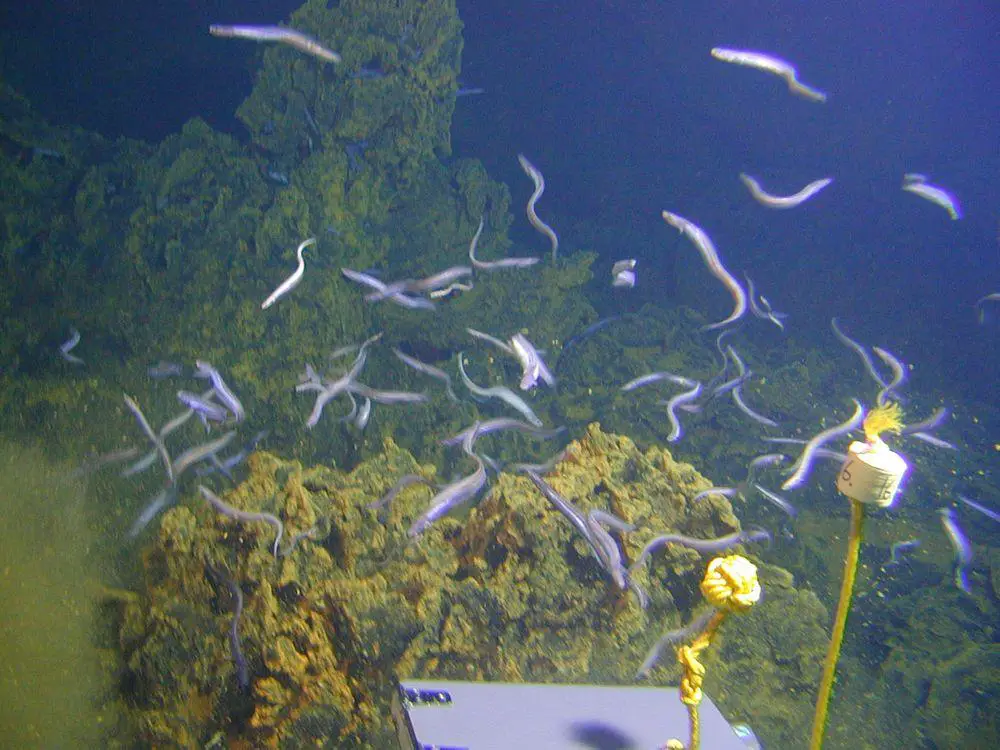
 In short
In short
There is an unique place east from the easternmost Samoa island. Deep under the sea a summit of new volcano is quickly rising towards the surface and thousands of rare eels are living on the summit of this volcano. This is the weird Vailulu’u Eel City.
 46.3%
46.3%
GPS coordinates
Location, address
Alternate names
Dominating species
Map of the site
If you see this after your page is loaded completely, leafletJS files are missing.
 In detail
In detail
A line of volcanoes
Samoa islands have been created by an interesting geological process. An enormous tectonic plate here is sliding towards the west and is pierced by volcanoes like a submachine gun shooting through the cardboard. In most "openings" the volcanoes have created mountains rising above the ocean – Samoa islands. It is expected that the next island will be Vailulu’u – a new volcano rapidly rising from the depths of the ocean to the east from the exotic Ta’u Island.
Vailulu’u
This submarine volcano was discovered in 1975. It is a very large mountain – it rises 4,200 m from the ocean floor – but still has to rise 590 m to reach sea level. At least it was like this in 2005 – further eruptions might have raised it further up.
Vailulu’u has a 2 km wide, round caldera, which is some 400 m deep.
In 2000 this caldera was fairly flat, but in 2005 the NOAA researchers found a new volcanic cone inside this caldera. It rises 300 m from the bottom of the caldera (rising up to 708 m below sea level). This new volcanic cone was named – Nafanua.
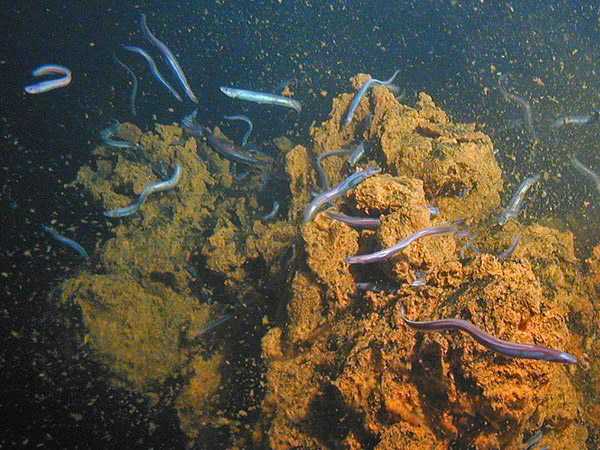
Eels
In 2005 the researchers dived nine times to the Nafanua with a submarine Pisces V. They were surprised to see rich life in this very new geological formation – the pillow lava was covered with yellow microbial mat and, most surprisingly – there were found hydrothermal vents near the summit, where the stones were teeming with countless cutthroat eels Dysommina rugosa.
Cutthroat eels are bottom-dwelling, deep-sea fishes, resembling agile snakes. They are up to 37 cm long and have been found in rather many places around the world. Vailulu’u was the first place where they have been studied in nature.
Most likely these eels just live among the volcanic stones and feed on crustaceans, which are floating by in the current.
"Moat of Death"
The vents in the top of the Nafanua volcano are emitting a solution that contains toxic materials. This fluid is heavier than the water and is flowing down in the caldera of Vailulu’u, where it accumulates.
Many sea animals die in this toxic water and the seabed around Nafanua is littered with carcasses of dead fish, squids, crustaceans. Only bright red, acid-resistant polychaetes (Polynoidae) are busy eating microorganisms from these carcasses.
Thus Nafanua has created two unique biotopes – the Eel City on the summit and the "Moat of Death" at its base.
The volcano most likely here is very active and it is expected that in this century there will appear a new island. The Eel City will change a lot, but no one knows whether the eels will stay and be that many here.
References
- Craig Young, Hubert Staudigel Eel City and the Moat of Death: An Active Volcano on the Samoan Hotspot. Ocean Explorer, NOAA. Accessed on December 9, 2011.
- Youtube video. NOAA. Accessed on December 9, 2011.
Vailulu’u Eel City and Moat of Death is included in the following article:
 Linked articles
Linked articles
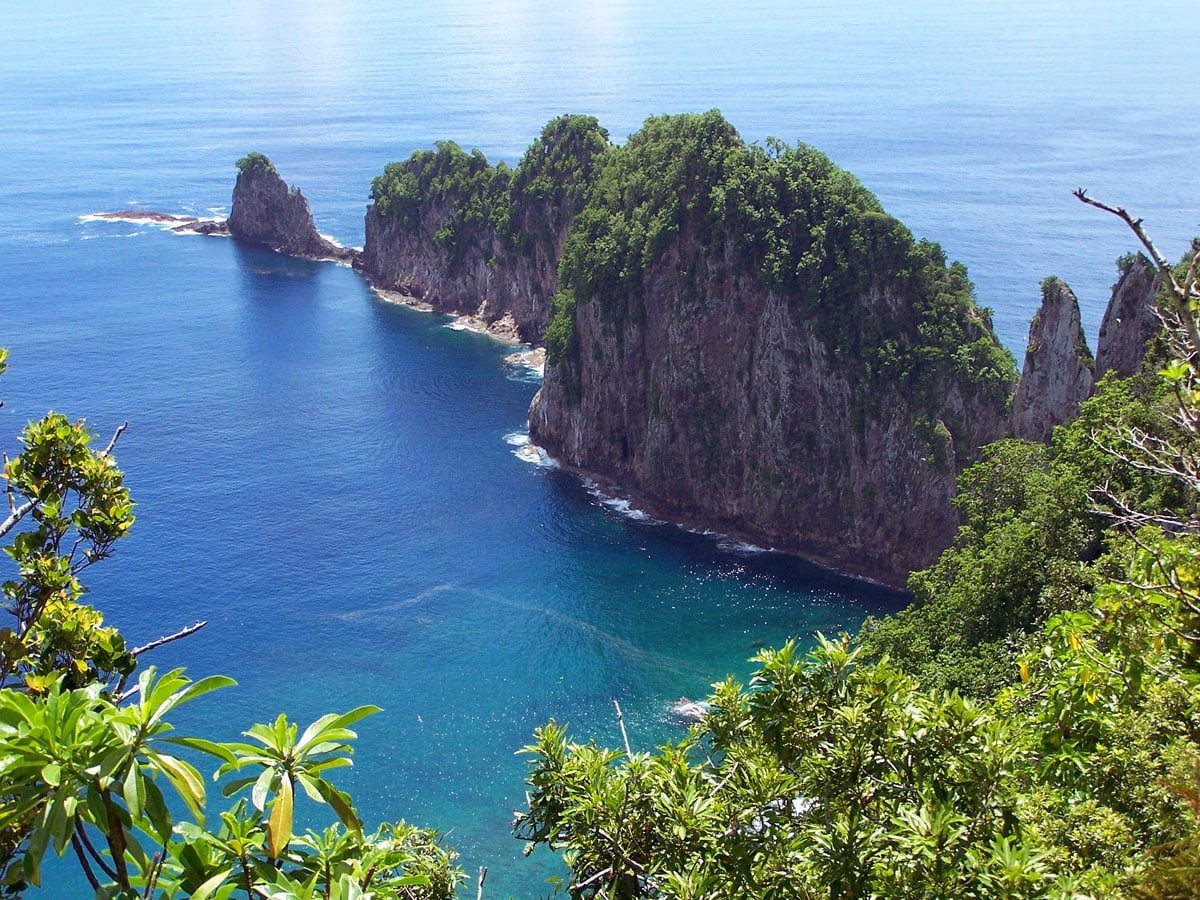
Wonders of American Samoa
This small island country offers breathtaking scenery and interesting natural and archaeological landmarks.
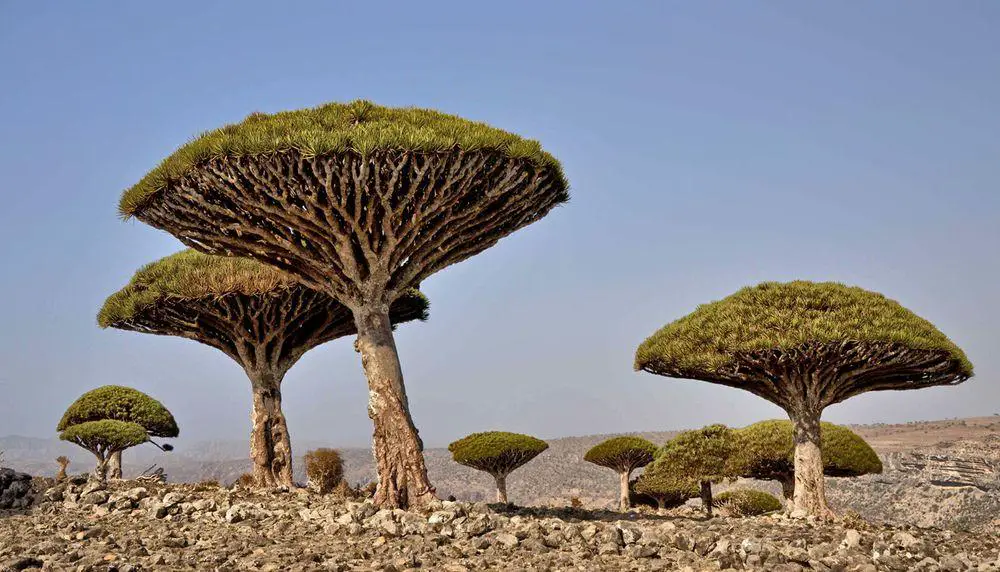
Ecosystems
Biotope is a rather small area with uniform environmental conditions and a specific community of life. Wondermondo describes biotopes and ecosystems which have striking looks, look very beautiful, or have other unusual characteristics.
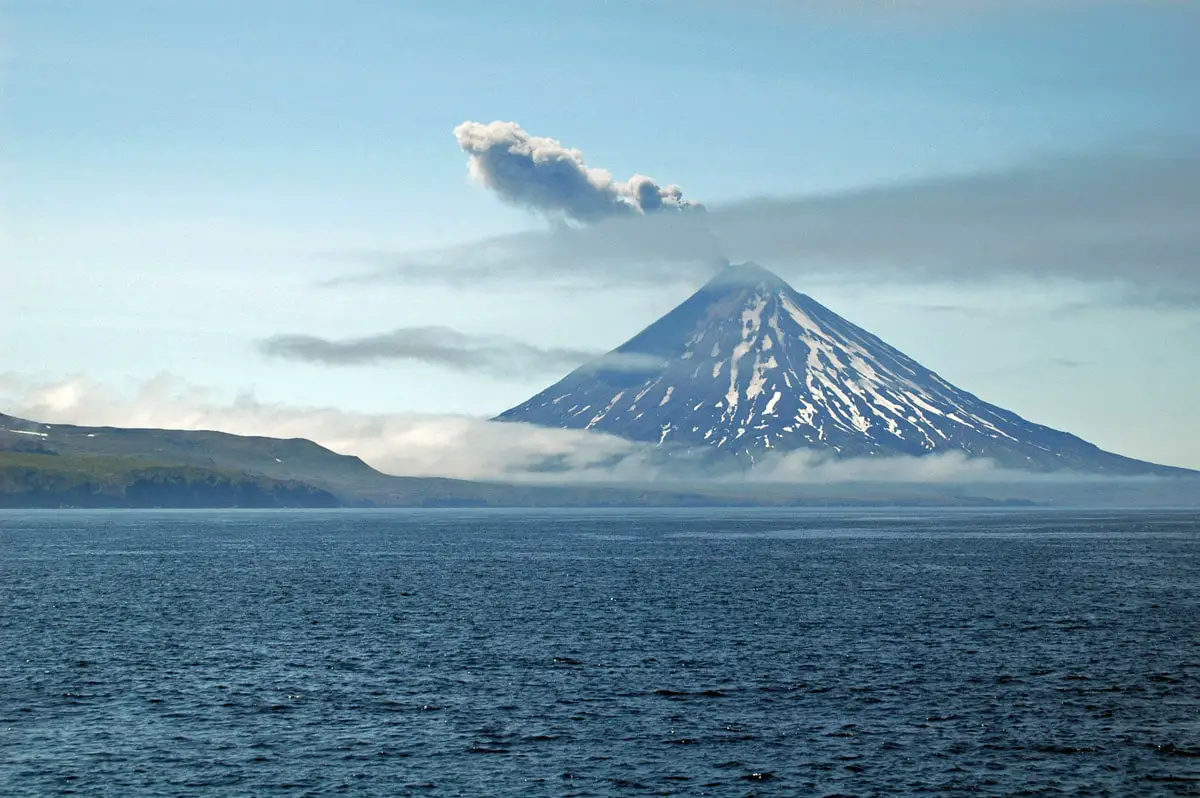
Volcanoes
This category includes the most unusual and interesting volcanoes of the world.
Over the last 10,000 years in some 1,500 places around the Earth mantle of Earth has emitted lava, ash, and gases through the crust of the planet. Each of these places is an active volcano. Some 50 – 70 volcanoes erupt every year and at any moment there are some 20 – 30 eruptions ongoing.
 Recommended books
Recommended books
The Fragile Edge: Diving and Other Adventures in the South Pacific
In The Fragile Edge, the documentary filmmaker and deep-sea diver Julia Whitty paints a mesmerizing, scientifically rich portrait of teeming coral reefs and sea life in the South Pacific. She takes us literally beneath the surface of the usual travel narrative, in an underwater equivalent of an African big-game safari.
Diving to a Deep-Sea Volcano
Scientists have mapped less than 10 percent of the ridge of underwater mountains in the middle of the Atlantic ocean. It is here that 95 percent of the volcanic activity on earth occurs. And it is also where the scientist Rich Lutz has tracked the remarkable evolution of bizarre creatures that spawn in hydrothermal vent fluids that are poisonous to most other forms of life.

